WoMars Mission Plan at MDRS
Nerio I is WoMars very first space analog mission under Mars-like conditions at the Mars Desert Research Station (MDRS), Utah, USA. Being one of the very few all-female MDRS crews, WoMars believes this is a great opportunity to study the scientific, social, and medical performances of our team. In addition, each of us is conducting innovative scientific research related to our field of expertise and our role as crew members at the MDRS.
There are four main research projects that WoMars is carrying out at the MDRS:
A New Deep Space Communication Tool For Astronauts
WoMars made the decision that their analog mission will adopt a ‘high fidelity to Martian conditions’ approach during their MDRS mission. This means that, except for any emergency situations, all communication between the habitat and “Earth” will be subject to a 5 minute one way time delay. In particular the crew is comparing the effectiveness of two communication tools that are designed for use in high latency situations. One of these tools, Latency Governed Messaging (LGM), is similar to the tool that has been adopted in previous similar research experiments in other analogs that have operated under time delay. The other, Space Braiding, is a novel tool also designed specifically for high latency environments. Both these tools have been designed and developed by Braided Communications Ltd.
Before coming to the MDRS, each crew member had to choose two friends or family members with whom they would like to communicate during the mission and thus, test LGM and Braided communication tools.
During the first week at MDRS, all the crew members had a one-hour LGM session with one of their relatives and a one-hour Braided session with the other relative. Next week, all the crew members will have another one-hour LGM session and another one-hour Braided session with their respective friend or family member. So that, at the end of the Nerio I mission, all crew members would have communicated with two loved ones using both software tools.
The main objective of this research project is to compare both software tools and provide feedback to Braided Communications Ltd. once the Nerio I mission has finished. This feedback will be crucial for Braided to help develop the Braided communication tool for future space missions.
Visual odometry to determine the position of a robot in other planets
In areas like Mars, where there is no GPS system, or any satellite network developed yet, it is difficult to know specific coordinates or to drive a drone or robot to a specific location. Lazarus is a hardware that enables autonomous drone flights or robot trips in environments with no satellite network. The hardware has been developed by Dronomy, a spin-off company based in Madrid, Spain, and founded by Adrian Carrio.
Before coming to the MDRS, Lazarus was installed in a robot. During the first week, the robot has been tested in four different areas – starting from the Hab’s tunnels and continuing in Zubrin’s Head, Kissing Camel and the MDRS Ridge. The crew has recorded several experiments where Lazarus completed a distance of 10 m following a straight line. Then, Lazarus completed a closed square-shaped circuit of 10 m x 10 m.
The results will help Dronomy prove Lazarus’ visual odometry in a Mars landscape. The data will also help understand the drift that the robot may have. This will help develop Lazarus’ for future space missions.
Gender and Crew Domination in MDRS isolation research
The psychological impact that astronauts undergo during space missions is a great concern for researchers. The fact that WoMars is an all-female crew, opens a very interesting line of investigation, as it rules out the gender influence and crew domination in mixed groups. This gives the perfect scenario to understand how women interact and collaborate without the presence of men.
WoMars is working in collaboration with Dr. Inga Popovaite, sociology researcher at Kaunas University of Technology, Lithuania. During the first week, all crew members have been writing a diary every night before going to sleep where they explained the most positive and negative experiences during the day. Writing down in these stressful situations is helping the crew to focus, calm down and maintain a healthier environment.
After the Nerio I mission, the diaries will be analyzed and the crew will be interviewed by Dr. Popovaite. The results of this research will help understand the management of emotions in small groups under an isolated confined environment.
Applications and Benefits of Augmented Reality (AR) for Training and Maintenance of a Human Settlement on Mars
The aim of this project is to identify areas where AR could be beneficial, including routinary tasks, maintenance and repair activities. For that, WoMars will record every task performed during the Nerio I mission, and will classify the tasks according to their repetitiveness and degree of difficulty. Then, WoMars will assess the possible benefits of AR as reduction in time or difficulty.
During the first week, the crew did a literature review of previous work on AR applications in space settlements as background for the study. Moreover, the crew started listing possible applications identified in their daily activities and classifying them.
Next week, the crew will continue identifying potential tasks that could be assisted with AR and the possible benefits.
After the Nerio I mission, WoMars plans to design the structure of an AR tool that could address some of the identified applications at MDRS. Ultimately, WoMars plans to develop a prototype to test its benefits in future missions.


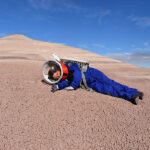
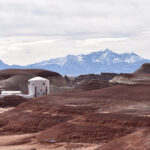
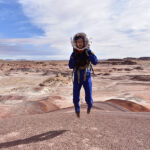
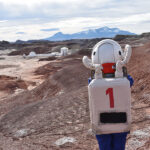
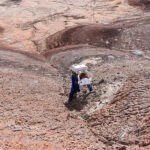
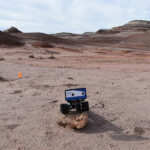
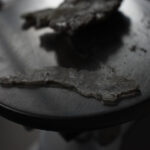
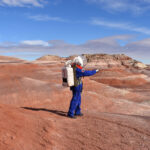
You must be logged in to post a comment.